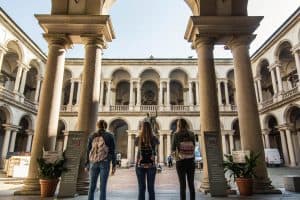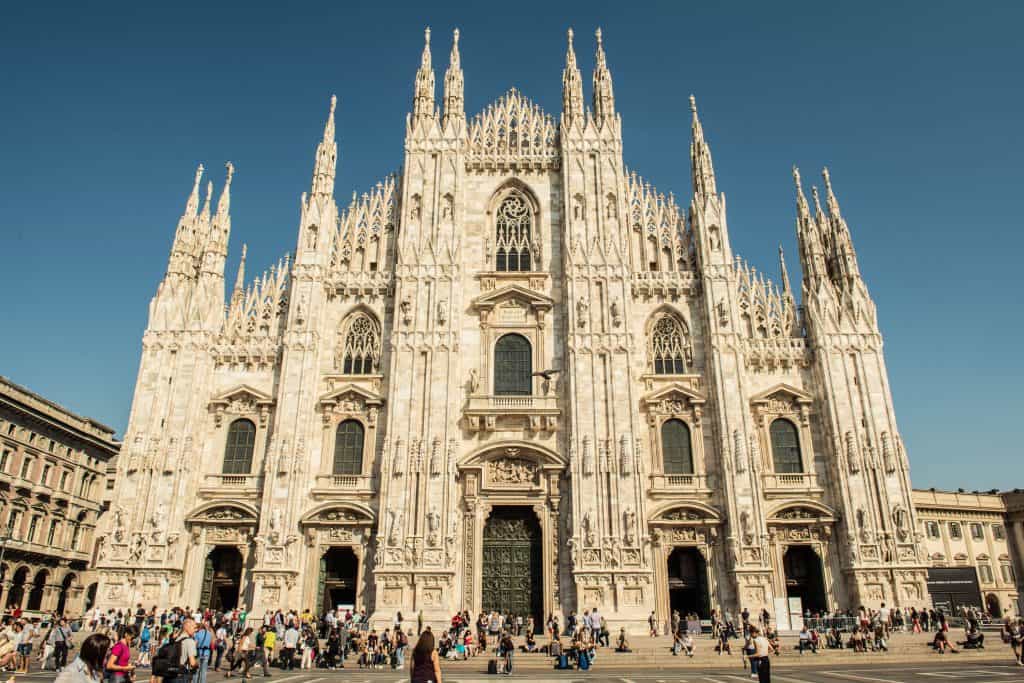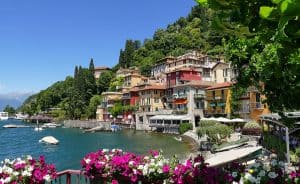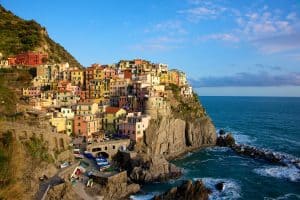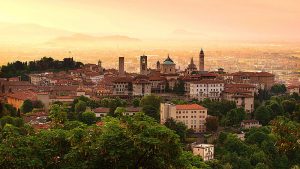Cathedral symbol of Milan, the Duomo is a late gothic masterpiece. Its construction started in 1386 d.c. and it was finished only in 1813, nearly 600 years later. The facade of the cathedral was concluded for last. Some minor rework kept going for the whole 19th century.
The Cathedral building works were finally concluded only in the fifties, when the last tiles were inserted to complete the right gate of the facade.
The Duomo is famous for being tremendously big: it is the third biggest Church in the world, right after St. Peter’s Basilica and the Seville Cathedral; another amazing feature of the Duomo is its decorative abundance: the building is towered by 3400 statues, 96 Gargoyles and thousands of half-busts and stoneworks. Today the Duomo covers most part of its square and allows visitors to observe it from every side.
The best moment to do so is at late evening, when the sun is low it shines on the whole facade, brightening the pink-white Candoglia marble. The “Madonnina”, a statue of the Virgin Mary, the protectress of the city, towers the whole cathedral from the highest spire, at 108,5 meters high
Undoubtedly the most famous theatre in the world. Opened the 3rd of August 1778 with Antonio Salieri’s play “L’Europa Riconosciuta” and two ballets of the Master De Baillou, it was designed by Piermarini, who had in mind a simple structure, in a slightly neoclassicism style.
The inside of La Scala, built in the particular horseshoe-shape, is entirely made of wood and its acustic is terrific. La Scala has 260 daisies, 4 balconies and 2 galleries.
Being La Scala globally recognised as the olympus of lyric music, every major artist exhibited on its stage and its season is among the most followed around the world. Annexed to La Scala we can find a museum where mementoes belonged to the greatest musicians, such as Arturo Toscanini, Franz Liszt, Gioacchino Rossini, Giacomo Puccini and Giuseppe Verdi, are kept.
While visiting the museum, If no rehearsal is scheduled, it is possible to admire the theatre from one of its daisies.
Supposedly built in 1368, the castle was at first a simple military outpost.It was only thanks to Francesco Sforza, Lord of the city, that it became a impregnable fortress.
The rebuild works were undertaken by Antonio Averlino, called the Filarete, who realized the central tower, who took its name from him as the Filarete Tower. He also built the two fortified round ashlar towers and the Ghirlanda, a sort of fenced area outside its walls, who was later on destroyed and only its subway passage is nowadays visitable.
As Ludovico, son of Francesco Sforza, rose to power the castle started to lose its strictly military use and started to turn into the Sforza family residence, one that could compete both for luxury and art with the most important courts of Europe, also thanks to the aid of the genius Leonardo Da Vinci that improved both the defensive side as well as the decoration of it. Within the castle we may still find nowadays the Milan’s art collections, among those we can find the Pietà Rondanini of Michelangelo.
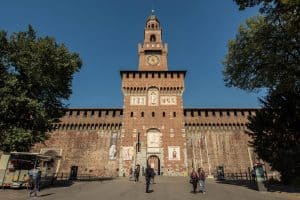
Santa Maria delle Grazie Church is one of the most important churches in Milan and one of the most important 1400 d.c. buildings in italy. The true luck that struck this church is the fact that in 1492 the Lord of Milan, Ludovico Sforza, decided to make his family mausoleum out of this church. Il Moro, as Ludovico Sforza was also called, contacted the great architect Donato Bramante to project the majestic church’s tiburio.
The Lord of Milan also committed the task of painting the Last Supper on one of the walls of the refectorium where the convent monks used to eat to Leonardo da Vinci
Leonardo realized his masterpiece and one among the most important piece of art in art history.
The last supper is the syntax of everyone of Leonardo’s study of optic, geometry and anatomy but most important is a painting able to take the breath out of the viewer for its beauty.
Remember to book your visit with large advance, because due to conservation policies, only few people are admitted in the room with the painting every day.

The Basilica is dedicated to the saint protector of Milan and second in importance only to the Duomo. Great masterpiece of Romanesque architecture, it is one of the oldest but better conserved churches in the world.
Sant’Ambrogio was built in 379 to fulfill the desire of the Bishop Ambrogio, who will later be named Saint. Starting from 397 the Basilica hosts the human remain of the saint that are still visible in the crypt. Inside the Basilica we will find the “Golden Altar”, an excellent goldsmith masterpiece of Carolingian age by master Volvino.
Above the Altar we can find the ciborium, a singolar monument of the IX century built by four porphyry columns that holds a canopy decorated by colourful plasterworks.
The Basilica is preceded by the Atrium of Ansperto, a great rectangular space surrounded on three sides by a portico that culminates, on the fourth side, into the narthex from where it is possible to enter the Basilica.
The Atrium was built in the XI century above a similar construction of the early christian Basilica
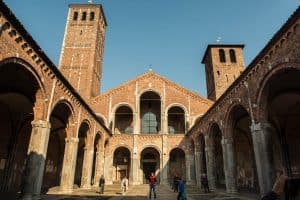
Among the more than 60 city museum, the Brera Art Gallery is the most important one. The palace of Brera was built in 1651 as convent and than turned, by will of Maria Theresa of Austria, into an important scientific institute provided with astronomical observatory, library and bothanic garden (each one of them still visitable nowadays)
The Pinacoteca inside the Brera palace, was opened for public in 1809 by the will of Napoleon Bonaparte. Inside the Pinacoteca hosts one of the most important art collection of the whole Italy, comparable only to the Uffizi in Firenze.
While walking the hallways of the Pinacoteca you may encounter some among the greatest art masterpieces of the world.
Among them we can find paintings of Andrea Mantegna, Raffaello, Piero della Francesca, Giovanni Bellini, Tiziano, Lorenzo Lotto, Tintoretto, Bernardino Luini, Donato Bramante, Caravaggio, Pieter Paul Rubens, Antonie Van Dyck, Tiepolo, Canaletto, Francesco Hayez and many many others.
